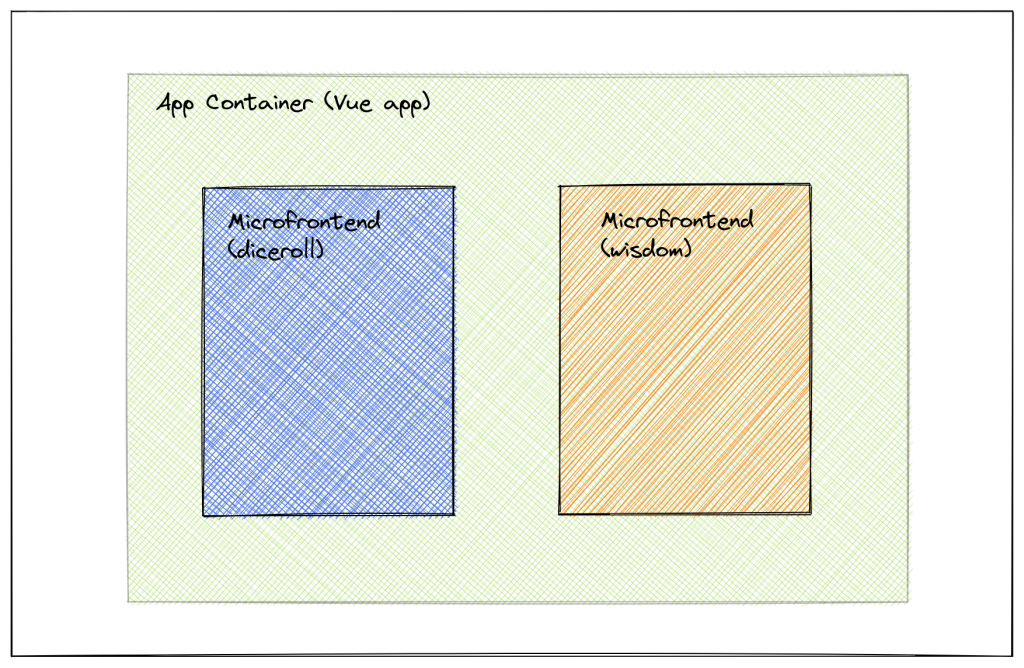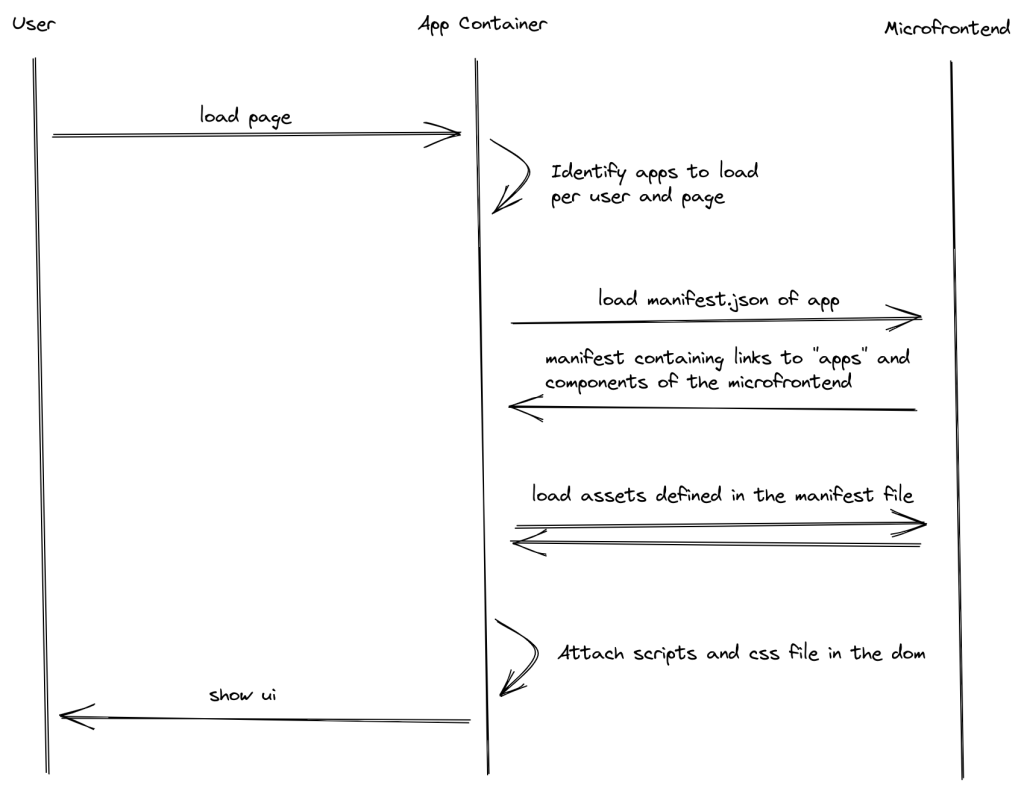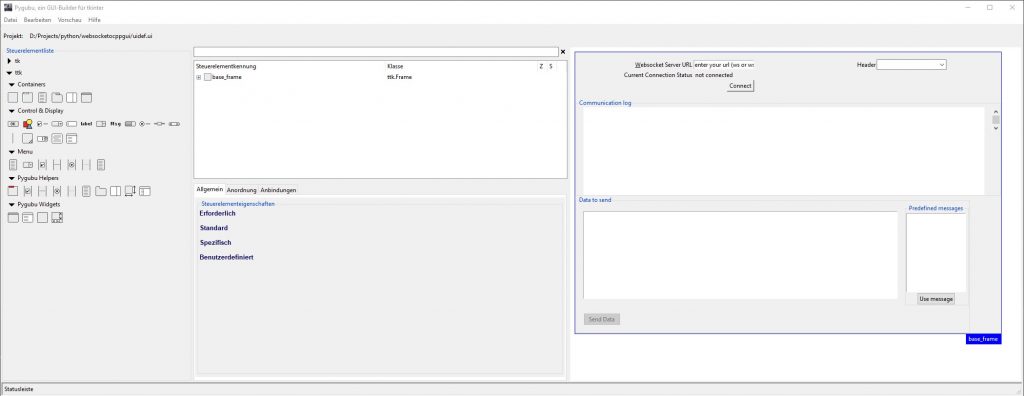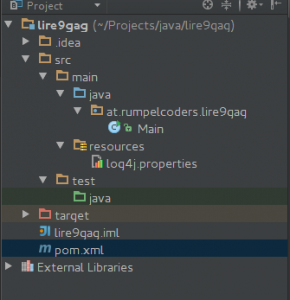Nach dem ich heute längere Zeit damit verbracht habe, die passenden Unicodes zu den Font Awesome Icons zu parsen, stelle ich hier nochmal das JSON zur Verfügung. Vielleicht findet ja jemand Verwendung dafür. (Stand 17.02.2015)
{"fa-glass":"\u000","fa-music":"\u001","fa-search":"\u002","fa-envelope-o":"\u003","fa-heart":"\u004","fa-star":"\u005","fa-star-o":"\u006","fa-user":"\u007","fa-film":"\u008","fa-th-large":"\u009","fa-th":"\u00a","fa-th-list":"\u00b","fa-check":"\u00c","fa-remove":"\u00d","fa-close":"\u00d","fa-times":"\u00d","fa-search-plus":"\u00e","fa-search-minus":"\u010","fa-power-off":"\u011","fa-signal":"\u012","fa-gear":"\u013","fa-cog":"\u013","fa-trash-o":"\u014","fa-home":"\u015","fa-file-o":"\u016","fa-clock-o":"\u017","fa-road":"\u018","fa-download":"\u019","fa-arrow-circle-o-down":"\u01a","fa-arrow-circle-o-up":"\u01b","fa-inbox":"\u01c","fa-play-circle-o":"\u01d","fa-rotate-right":"\u01e","fa-repeat":"\u01e","fa-refresh":"\u021","fa-list-alt":"\u022","fa-lock":"\u023","fa-flag":"\u024","fa-headphones":"\u025","fa-volume-off":"\u026","fa-volume-down":"\u027","fa-volume-up":"\u028","fa-qrcode":"\u029","fa-barcode":"\u02a","fa-tag":"\u02b","fa-tags":"\u02c","fa-book":"\u02d","fa-bookmark":"\u02e","fa-print":"\u02f","fa-camera":"\u030","fa-font":"\u031","fa-bold":"\u032","fa-italic":"\u033","fa-text-height":"\u034","fa-text-width":"\u035","fa-align-left":"\u036","fa-align-center":"\u037","fa-align-right":"\u038","fa-align-justify":"\u039","fa-list":"\u03a","fa-dedent":"\u03b","fa-outdent":"\u03b","fa-indent":"\u03c","fa-video-camera":"\u03d","fa-photo":"\u03e","fa-image":"\u03e","fa-picture-o":"\u03e","fa-pencil":"\u040","fa-map-marker":"\u041","fa-adjust":"\u042","fa-tint":"\u043","fa-edit":"\u044","fa-pencil-square-o":"\u044","fa-share-square-o":"\u045","fa-check-square-o":"\u046","fa-arrows":"\u047","fa-step-backward":"\u048","fa-fast-backward":"\u049","fa-backward":"\u04a","fa-play":"\u04b","fa-pause":"\u04c","fa-stop":"\u04d","fa-forward":"\u04e","fa-fast-forward":"\u050","fa-step-forward":"\u051","fa-eject":"\u052","fa-chevron-left":"\u053","fa-chevron-right":"\u054","fa-plus-circle":"\u055","fa-minus-circle":"\u056","fa-times-circle":"\u057","fa-check-circle":"\u058","fa-question-circle":"\u059","fa-info-circle":"\u05a","fa-crosshairs":"\u05b","fa-times-circle-o":"\u05c","fa-check-circle-o":"\u05d","fa-ban":"\u05e","fa-arrow-left":"\u060","fa-arrow-right":"\u061","fa-arrow-up":"\u062","fa-arrow-down":"\u063","fa-mail-forward":"\u064","fa-share":"\u064","fa-expand":"\u065","fa-compress":"\u066","fa-plus":"\u067","fa-minus":"\u068","fa-asterisk":"\u069","fa-exclamation-circle":"\u06a","fa-gift":"\u06b","fa-leaf":"\u06c","fa-fire":"\u06d","fa-eye":"\u06e","fa-eye-slash":"\u070","fa-warning":"\u071","fa-exclamation-triangle":"\u071","fa-plane":"\u072","fa-calendar":"\u073","fa-random":"\u074","fa-comment":"\u075","fa-magnet":"\u076","fa-chevron-up":"\u077","fa-chevron-down":"\u078","fa-retweet":"\u079","fa-shopping-cart":"\u07a","fa-folder":"\u07b","fa-folder-open":"\u07c","fa-arrows-v":"\u07d","fa-arrows-h":"\u07e","fa-bar-chart-o":"\u080","fa-bar-chart":"\u080","fa-twitter-square":"\u081","fa-facebook-square":"\u082","fa-camera-retro":"\u083","fa-key":"\u084","fa-gears":"\u085","fa-cogs":"\u085","fa-comments":"\u086","fa-thumbs-o-up":"\u087","fa-thumbs-o-down":"\u088","fa-star-half":"\u089","fa-heart-o":"\u08a","fa-sign-out":"\u08b","fa-linkedin-square":"\u08c","fa-thumb-tack":"\u08d","fa-external-link":"\u08e","fa-sign-in":"\u090","fa-trophy":"\u091","fa-github-square":"\u092","fa-upload":"\u093","fa-lemon-o":"\u094","fa-phone":"\u095","fa-square-o":"\u096","fa-bookmark-o":"\u097","fa-phone-square":"\u098","fa-twitter":"\u099","fa-facebook-f":"\u09a","fa-facebook":"\u09a","fa-github":"\u09b","fa-unlock":"\u09c","fa-credit-card":"\u09d","fa-rss":"\u09e","fa-hdd-o":"\u0a0","fa-bullhorn":"\u0a1","fa-bell":"\u0f3","fa-certificate":"\u0a3","fa-hand-o-right":"\u0a4","fa-hand-o-left":"\u0a5","fa-hand-o-up":"\u0a6","fa-hand-o-down":"\u0a7","fa-arrow-circle-left":"\u0a8","fa-arrow-circle-right":"\u0a9","fa-arrow-circle-up":"\u0aa","fa-arrow-circle-down":"\u0ab","fa-globe":"\u0ac","fa-wrench":"\u0ad","fa-tasks":"\u0ae","fa-filter":"\u0b0","fa-briefcase":"\u0b1","fa-arrows-alt":"\u0b2","fa-group":"\u0c0","fa-users":"\u0c0","fa-chain":"\u0c1","fa-link":"\u0c1","fa-cloud":"\u0c2","fa-flask":"\u0c3","fa-cut":"\u0c4","fa-scissors":"\u0c4","fa-copy":"\u0c5","fa-files-o":"\u0c5","fa-paperclip":"\u0c6","fa-save":"\u0c7","fa-floppy-o":"\u0c7","fa-square":"\u0c8","fa-navicon":"\u0c9","fa-reorder":"\u0c9","fa-bars":"\u0c9","fa-list-ul":"\u0ca","fa-list-ol":"\u0cb","fa-strikethrough":"\u0cc","fa-underline":"\u0cd","fa-table":"\u0ce","fa-magic":"\u0d0","fa-truck":"\u0d1","fa-pinterest":"\u0d2","fa-pinterest-square":"\u0d3","fa-google-plus-square":"\u0d4","fa-google-plus":"\u0d5","fa-money":"\u0d6","fa-caret-down":"\u0d7","fa-caret-up":"\u0d8","fa-caret-left":"\u0d9","fa-caret-right":"\u0da","fa-columns":"\u0db","fa-unsorted":"\u0dc","fa-sort":"\u0dc","fa-sort-down":"\u0dd","fa-sort-desc":"\u0dd","fa-sort-up":"\u0de","fa-sort-asc":"\u0de","fa-envelope":"\u0e0","fa-linkedin":"\u0e1","fa-rotate-left":"\u0e2","fa-undo":"\u0e2","fa-legal":"\u0e3","fa-gavel":"\u0e3","fa-dashboard":"\u0e4","fa-tachometer":"\u0e4","fa-comment-o":"\u0e5","fa-comments-o":"\u0e6","fa-flash":"\u0e7","fa-bolt":"\u0e7","fa-sitemap":"\u0e8","fa-umbrella":"\u0e9","fa-paste":"\u0ea","fa-clipboard":"\u0ea","fa-lightbulb-o":"\u0eb","fa-exchange":"\u0ec","fa-cloud-download":"\u0ed","fa-cloud-upload":"\u0ee","fa-user-md":"\u0f0","fa-stethoscope":"\u0f1","fa-suitcase":"\u0f2","fa-bell-o":"\u0a2","fa-coffee":"\u0f4","fa-cutlery":"\u0f5","fa-file-text-o":"\u0f6","fa-building-o":"\u0f7","fa-hospital-o":"\u0f8","fa-ambulance":"\u0f9","fa-medkit":"\u0fa","fa-fighter-jet":"\u0fb","fa-beer":"\u0fc","fa-h-square":"\u0fd","fa-plus-square":"\u0fe","fa-angle-double-left":"\u100","fa-angle-double-right":"\u101","fa-angle-double-up":"\u102","fa-angle-double-down":"\u103","fa-angle-left":"\u104","fa-angle-right":"\u105","fa-angle-up":"\u106","fa-angle-down":"\u107","fa-desktop":"\u108","fa-laptop":"\u109","fa-tablet":"\u10a","fa-mobile-phone":"\u10b","fa-mobile":"\u10b","fa-circle-o":"\u10c","fa-quote-left":"\u10d","fa-quote-right":"\u10e","fa-spinner":"\u110","fa-circle":"\u111","fa-mail-reply":"\u112","fa-reply":"\u112","fa-github-alt":"\u113","fa-folder-o":"\u114","fa-folder-open-o":"\u115","fa-smile-o":"\u118","fa-frown-o":"\u119","fa-meh-o":"\u11a","fa-gamepad":"\u11b","fa-keyboard-o":"\u11c","fa-flag-o":"\u11d","fa-flag-checkered":"\u11e","fa-terminal":"\u120","fa-code":"\u121","fa-mail-reply-all":"\u122","fa-reply-all":"\u122","fa-star-half-empty":"\u123","fa-star-half-full":"\u123","fa-star-half-o":"\u123","fa-location-arrow":"\u124","fa-crop":"\u125","fa-code-fork":"\u126","fa-unlink":"\u127","fa-chain-broken":"\u127","fa-question":"\u128","fa-info":"\u129","fa-exclamation":"\u12a","fa-superscript":"\u12b","fa-subscript":"\u12c","fa-eraser":"\u12d","fa-puzzle-piece":"\u12e","fa-microphone":"\u130","fa-microphone-slash":"\u131","fa-shield":"\u132","fa-calendar-o":"\u133","fa-fire-extinguisher":"\u134","fa-rocket":"\u135","fa-maxcdn":"\u136","fa-chevron-circle-left":"\u137","fa-chevron-circle-right":"\u138","fa-chevron-circle-up":"\u139","fa-chevron-circle-down":"\u13a","fa-html5":"\u13b","fa-css3":"\u13c","fa-anchor":"\u13d","fa-unlock-alt":"\u13e","fa-bullseye":"\u140","fa-ellipsis-h":"\u141","fa-ellipsis-v":"\u142","fa-rss-square":"\u143","fa-play-circle":"\u144","fa-ticket":"\u145","fa-minus-square":"\u146","fa-minus-square-o":"\u147","fa-level-up":"\u148","fa-level-down":"\u149","fa-check-square":"\u14a","fa-pencil-square":"\u14b","fa-external-link-square":"\u14c","fa-share-square":"\u14d","fa-compass":"\u14e","fa-toggle-down":"\u150","fa-caret-square-o-down":"\u150","fa-toggle-up":"\u151","fa-caret-square-o-up":"\u151","fa-toggle-right":"\u152","fa-caret-square-o-right":"\u152","fa-euro":"\u153","fa-eur":"\u153","fa-gbp":"\u154","fa-dollar":"\u155","fa-usd":"\u155","fa-rupee":"\u156","fa-inr":"\u156","fa-cny":"\u157","fa-rmb":"\u157","fa-yen":"\u157","fa-jpy":"\u157","fa-ruble":"\u158","fa-rouble":"\u158","fa-rub":"\u158","fa-won":"\u159","fa-krw":"\u159","fa-bitcoin":"\u15a","fa-btc":"\u15a","fa-file":"\u15b","fa-file-text":"\u15c","fa-sort-alpha-asc":"\u15d","fa-sort-alpha-desc":"\u15e","fa-sort-amount-asc":"\u160","fa-sort-amount-desc":"\u161","fa-sort-numeric-asc":"\u162","fa-sort-numeric-desc":"\u163","fa-thumbs-up":"\u164","fa-thumbs-down":"\u165","fa-youtube-square":"\u166","fa-youtube":"\u167","fa-xing":"\u168","fa-xing-square":"\u169","fa-youtube-play":"\u16a","fa-dropbox":"\u16b","fa-stack-overflow":"\u16c","fa-instagram":"\u16d","fa-flickr":"\u16e","fa-adn":"\u170","fa-bitbucket":"\u171","fa-bitbucket-square":"\u172","fa-tumblr":"\u173","fa-tumblr-square":"\u174","fa-long-arrow-down":"\u175","fa-long-arrow-up":"\u176","fa-long-arrow-left":"\u177","fa-long-arrow-right":"\u178","fa-apple":"\u179","fa-windows":"\u17a","fa-android":"\u17b","fa-linux":"\u17c","fa-dribbble":"\u17d","fa-skype":"\u17e","fa-foursquare":"\u180","fa-trello":"\u181","fa-female":"\u182","fa-male":"\u183","fa-gittip":"\u184","fa-gratipay":"\u184","fa-sun-o":"\u185","fa-moon-o":"\u186","fa-archive":"\u187","fa-bug":"\u188","fa-vk":"\u189","fa-weibo":"\u18a","fa-renren":"\u18b","fa-pagelines":"\u18c","fa-stack-exchange":"\u18d","fa-arrow-circle-o-right":"\u18e","fa-arrow-circle-o-left":"\u190","fa-toggle-left":"\u191","fa-caret-square-o-left":"\u191","fa-dot-circle-o":"\u192","fa-wheelchair":"\u193","fa-vimeo-square":"\u194","fa-turkish-lira":"\u195","fa-try":"\u195","fa-plus-square-o":"\u196","fa-space-shuttle":"\u197","fa-slack":"\u198","fa-envelope-square":"\u199","fa-wordpress":"\u19a","fa-openid":"\u19b","fa-institution":"\u19c","fa-bank":"\u19c","fa-university":"\u19c","fa-mortar-board":"\u19d","fa-graduation-cap":"\u19d","fa-yahoo":"\u19e","fa-google":"\u1a0","fa-reddit":"\u1a1","fa-reddit-square":"\u1a2","fa-stumbleupon-circle":"\u1a3","fa-stumbleupon":"\u1a4","fa-delicious":"\u1a5","fa-digg":"\u1a6","fa-pied-piper":"\u1a7","fa-pied-piper-alt":"\u1a8","fa-drupal":"\u1a9","fa-joomla":"\u1aa","fa-language":"\u1ab","fa-fax":"\u1ac","fa-building":"\u1ad","fa-child":"\u1ae","fa-paw":"\u1b0","fa-spoon":"\u1b1","fa-cube":"\u1b2","fa-cubes":"\u1b3","fa-behance":"\u1b4","fa-behance-square":"\u1b5","fa-steam":"\u1b6","fa-steam-square":"\u1b7","fa-recycle":"\u1b8","fa-automobile":"\u1b9","fa-car":"\u1b9","fa-cab":"\u1ba","fa-taxi":"\u1ba","fa-tree":"\u1bb","fa-spotify":"\u1bc","fa-deviantart":"\u1bd","fa-soundcloud":"\u1be","fa-database":"\u1c0","fa-file-pdf-o":"\u1c1","fa-file-word-o":"\u1c2","fa-file-excel-o":"\u1c3","fa-file-powerpoint-o":"\u1c4","fa-file-photo-o":"\u1c5","fa-file-picture-o":"\u1c5","fa-file-image-o":"\u1c5","fa-file-zip-o":"\u1c6","fa-file-archive-o":"\u1c6","fa-file-sound-o":"\u1c7","fa-file-audio-o":"\u1c7","fa-file-movie-o":"\u1c8","fa-file-video-o":"\u1c8","fa-file-code-o":"\u1c9","fa-vine":"\u1ca","fa-codepen":"\u1cb","fa-jsfiddle":"\u1cc","fa-life-bouy":"\u1cd","fa-life-buoy":"\u1cd","fa-life-saver":"\u1cd","fa-support":"\u1cd","fa-life-ring":"\u1cd","fa-circle-o-notch":"\u1ce","fa-ra":"\u1d0","fa-rebel":"\u1d0","fa-ge":"\u1d1","fa-empire":"\u1d1","fa-git-square":"\u1d2","fa-git":"\u1d3","fa-hacker-news":"\u1d4","fa-tencent-weibo":"\u1d5","fa-qq":"\u1d6","fa-wechat":"\u1d7","fa-weixin":"\u1d7","fa-send":"\u1d8","fa-paper-plane":"\u1d8","fa-send-o":"\u1d9","fa-paper-plane-o":"\u1d9","fa-history":"\u1da","fa-genderless":"\u1db","fa-circle-thin":"\u1db","fa-header":"\u1dc","fa-paragraph":"\u1dd","fa-sliders":"\u1de","fa-share-alt":"\u1e0","fa-share-alt-square":"\u1e1","fa-bomb":"\u1e2","fa-soccer-ball-o":"\u1e3","fa-futbol-o":"\u1e3","fa-tty":"\u1e4","fa-binoculars":"\u1e5","fa-plug":"\u1e6","fa-slideshare":"\u1e7","fa-twitch":"\u1e8","fa-yelp":"\u1e9","fa-newspaper-o":"\u1ea","fa-wifi":"\u1eb","fa-calculator":"\u1ec","fa-paypal":"\u1ed","fa-google-wallet":"\u1ee","fa-cc-visa":"\u1f0","fa-cc-mastercard":"\u1f1","fa-cc-discover":"\u1f2","fa-cc-amex":"\u1f3","fa-cc-paypal":"\u1f4","fa-cc-stripe":"\u1f5","fa-bell-slash":"\u1f6","fa-bell-slash-o":"\u1f7","fa-trash":"\u1f8","fa-copyright":"\u1f9","fa-at":"\u1fa","fa-eyedropper":"\u1fb","fa-paint-brush":"\u1fc","fa-birthday-cake":"\u1fd","fa-area-chart":"\u1fe","fa-pie-chart":"\u200","fa-line-chart":"\u201","fa-lastfm":"\u202","fa-lastfm-square":"\u203","fa-toggle-off":"\u204","fa-toggle-on":"\u205","fa-bicycle":"\u206","fa-bus":"\u207","fa-ioxhost":"\u208","fa-angellist":"\u209","fa-cc":"\u20a","fa-shekel":"\u20b","fa-sheqel":"\u20b","fa-ils":"\u20b","fa-meanpath":"\u20c","fa-buysellads":"\u20d","fa-connectdevelop":"\u20e","fa-dashcube":"\u210","fa-forumbee":"\u211","fa-leanpub":"\u212","fa-sellsy":"\u213","fa-shirtsinbulk":"\u214","fa-simplybuilt":"\u215","fa-skyatlas":"\u216","fa-cart-plus":"\u217","fa-cart-arrow-down":"\u218","fa-diamond":"\u219","fa-ship":"\u21a","fa-user-secret":"\u21b","fa-motorcycle":"\u21c","fa-street-view":"\u21d","fa-heartbeat":"\u21e","fa-venus":"\u221","fa-mars":"\u222","fa-mercury":"\u223","fa-transgender":"\u224","fa-transgender-alt":"\u225","fa-venus-double":"\u226","fa-mars-double":"\u227","fa-venus-mars":"\u228","fa-mars-stroke":"\u229","fa-mars-stroke-v":"\u22a","fa-mars-stroke-h":"\u22b","fa-neuter":"\u22c","fa-facebook-official":"\u230","fa-pinterest-p":"\u231","fa-whatsapp":"\u232","fa-server":"\u233","fa-user-plus":"\u234","fa-user-times":"\u235","fa-hotel":"\u236","fa-bed":"\u236","fa-viacoin":"\u237","fa-train":"\u238","fa-subway":"\u239","fa-medium":"\u23a"}



